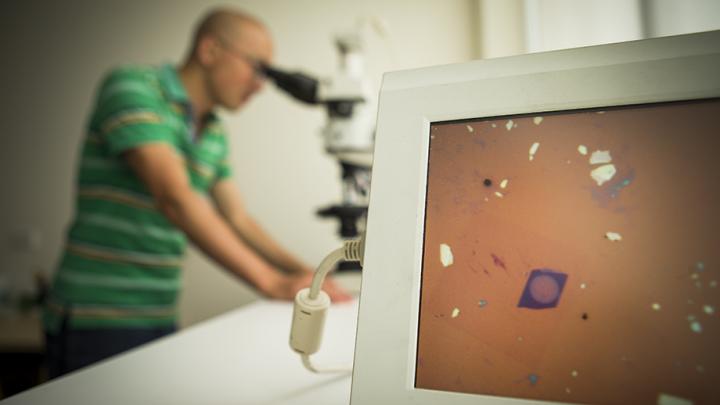Scientists from The Australian National University (ANU) have created the world’s thinnest lens— just one two-thousandth the thickness of a human hair. The new discovery will open the door to flexible computer displays and have an impact on miniature cameras.

According to Dr. Yuerui (Larry) Lu, leader of Nano-Electro-Mechanical System (NEMS) Laboratory in the ANU Research School of Engineering, the discovery was made possible due to molybdenum disulphide crystal.
“This type of material is the perfect candidate for future flexible displays,” said Lu.”We will also be able to use arrays of micro lenses to mimic the compound eyes of insects.”
The 6.3-nanometer lens is made from 50-nanometer thick gold nano-bar arrays, known as a metamaterial, and comprises nine atomic layers. Molybdenum disulphide is in a class of materials known as chalcogenide glasses that have flexible electronic characteristics that have made them popular for high-technology components.
Molybdenum disulphide is capable of surviving high temperatures, is a lubricant, acts as a good semiconductor and can emit photons too.
The scientists were able to miniaturize the optical components and integrate advanced optical functionalities by manipulating the flow of light on the atomic scale.
The team created a 10-micron radius lens using a focused ion beam to shave off the layers atom by atom, until they ended up with the dome shape of the lens.
What they realized was that a single layers of molybdenum disulphide at 0.7 nanometres thick appeared to a light beam to be 50 times thicker, at 38 nanometres. This property, known as optical path length, determines the phase of the light and governs interference and diffraction of light as it propagates.
“At the beginning we couldn’t imagine why molybdenum disulphide had such surprising properties,” said Lu.
More information at ANU.

Comments are closed, but trackbacks and pingbacks are open.